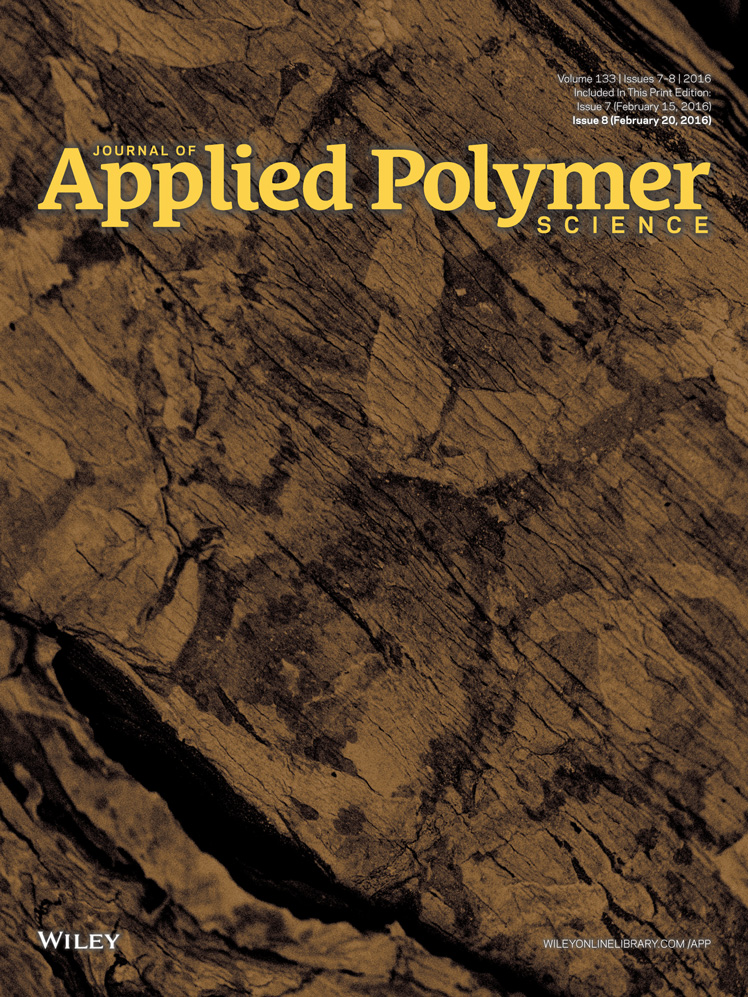Electrostatically driven modulation of the reinforcement of agarose hydrogels by cellulose nanowhiskers
ABSTRACT
The modulation of the reinforcement effect brought by the addition of tunicate cellulose nanowhiskers with different surface charge densities to an agarose hydrogel matrix has been studied using linear viscoelastic measurements. The cellulose nanowhiskers were characterized using transmission electron microscopy, and their surface charge was determined by a titration method. The results show that increasing the charge at the surface of nanowhiskers tends to enhance the reinforcement effect, because of a better dispersion of nanowhiskers. However, the results also suggest the existence of an optimum surface charge, corresponding to a maximum reinforcement effect at a given volume fraction. © 2015 Wiley Periodicals, Inc. J. Appl. Polym. Sci. 2016, 133, 43063.




